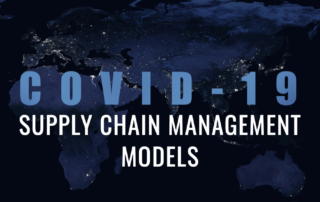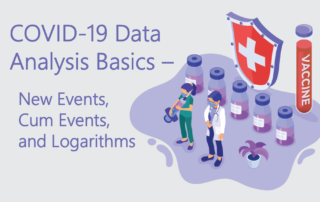Arkieva Supply Chain Link Blog.
Creating the link between better supply chain planning and decisions.
RECENT POSTS
Lessons for COVID-19 and Supply Chain Management Models
For those that work regularly in the supply chain or managing the demand-supply network (DSN) models are commonplace to help with similar questions. This blog will provide some basics about models that all will find helpful...
COVID-19 Data Analysis Basics – Taking the Mystery Out of Smoothing Daily Counts
We see graphs of COVID-19 events on a regular basis. One of the most common is a bar chart for daily new events (COVID-19 cases, hospitalizations, deaths). Recently in presentations, smoothing methods used to overcome limitations is presenting the raw daily data. This blog will take some of the mystery out of smoothing methods.
COVID-19 Taking the Mystery Out of the APEX Curve and Some Basics on Restoring “Normal”
This blog provides some basic information on the curve, relates statistical concepts to policy and actions, and examines policy options for a safe restart relating them to the APEX curve. There are three essential groups of action to begin a safe restart: testing, detailed understanding of the impact of mitigation actions, and the ability to do detailed tracking.
Some COVID-19 Data Analysis Basics – New Events, Cumulative Events, and Logarithms
We see graphs of COVID-19 events on a regular basis these days. Two common ones are bar charts for daily new events (COVID-19 cases, hospitalizations, deaths) and the “sweeping curve” to capture a cumulative number of events. Additionally, log transformations are mentioned. The purpose of this blog is to shed a bit of light on these curves and the role of the log transformation.
Lessons From the Operating Curve for the Dual Government COVID-19 Objectives: Reopen the Economy and Eliminate COVID-19
There is plenty of material being written and posted on the challenges, estimating the growth in COVID19 incidences, and thoughts about the economy. The purpose of this is to pull from experiences in the trenches in shifting OPCURVE to provide some guidance on actions to take to help the nation achieve both critical goals.
Basics of the Value of S Curves and Market Adoption of a New Product
The S-curve is an indispensable tool for demand planning for new products or technology. Learn the steps to create the right model for your market growth.
Taking the Mystery Out of the Rapid Growth of COVID-19 and the Purpose of Social Distancing – Some Basics for Octogenarians
The spread of the COVID19 virus is a major concern of everyone. Typically, two critical questions are being asked: why it seemed to grow so quickly over the last few weeks and what is the impact of social distancing. This blog provides a kitchen table explanation of “rapid growth” and how social distancing might dampen growth.
Conditional Probability Made Easy – Heart of Machine Learning
Probabilities are persuasive in supply chains and analytic methods – especially in machine learning where conditional probability is a dominant underlying structure that makes or breaks the success of an application. In this blog, we will learn how to take the mystery out of the term ‘conditional probability’.
Safety Stock for Raw Materials – A View from the Trenches and Importance of Community Intelligence
A common question is how to best manage safety stock for critical raw materials that are critical to the production of the exit product...
Transform Your Supply Chain Into a Competitive Edge
Ask for a one-on-one demo of the Arkieva supply chain planning solution














